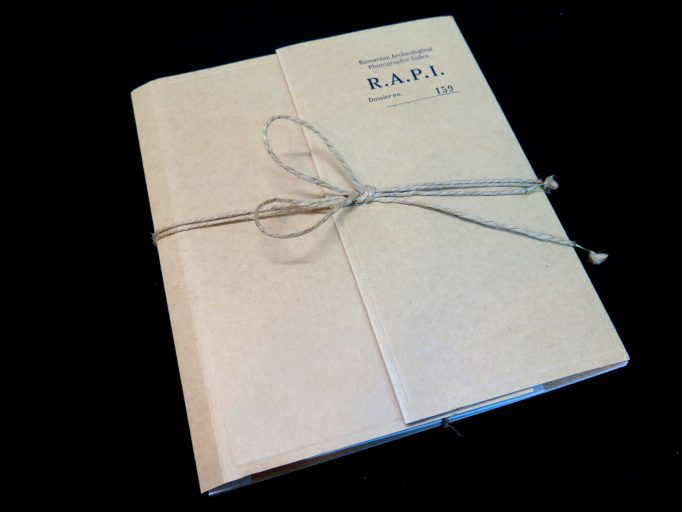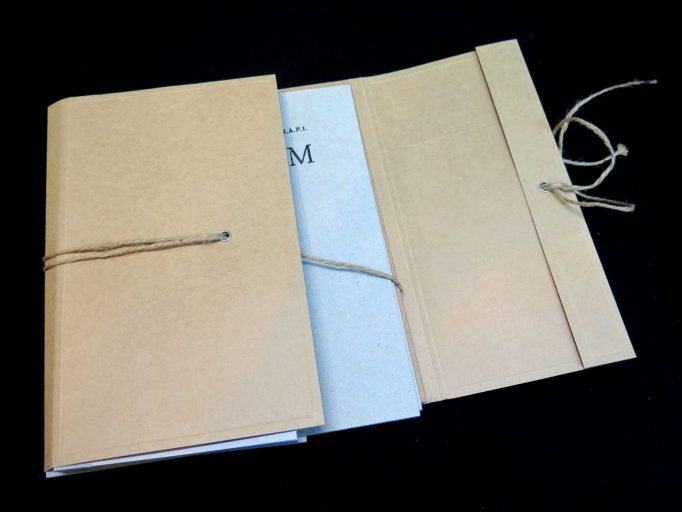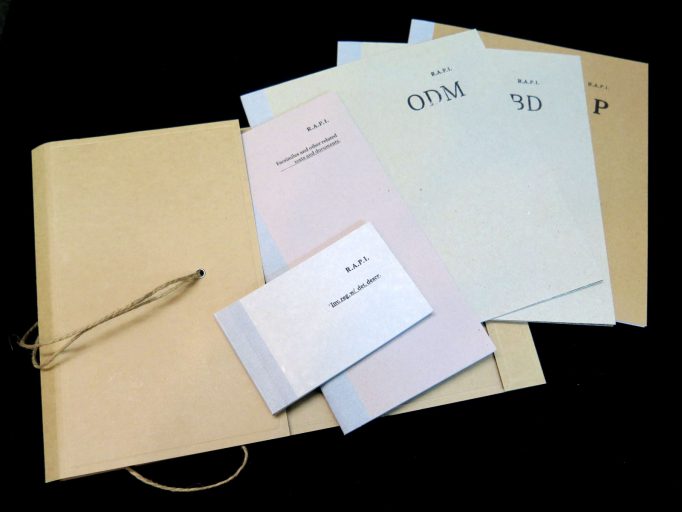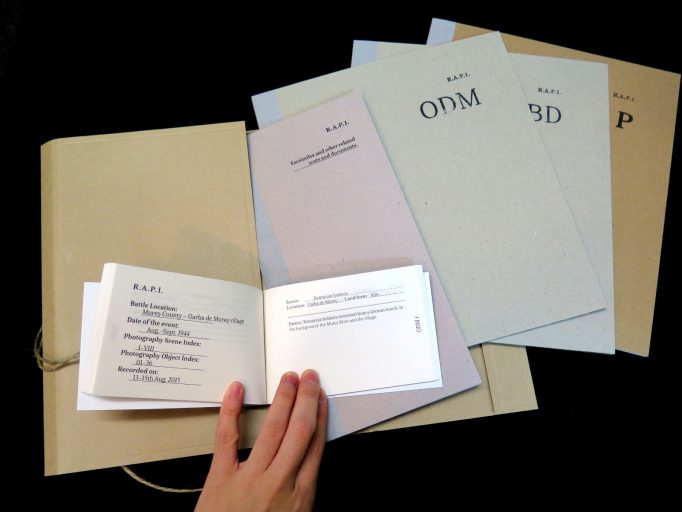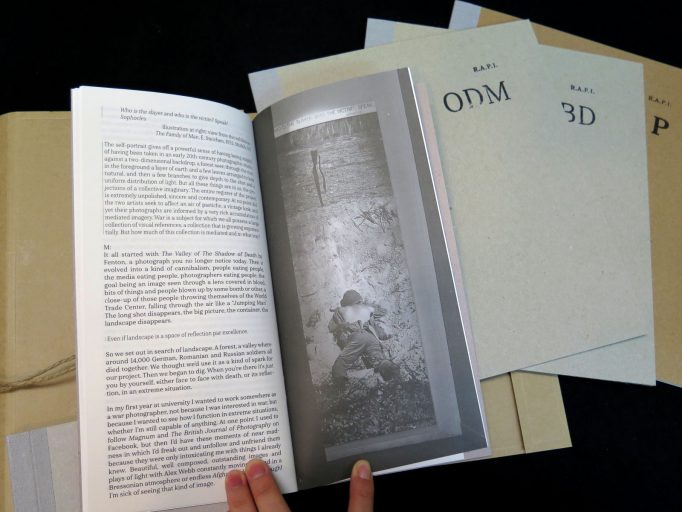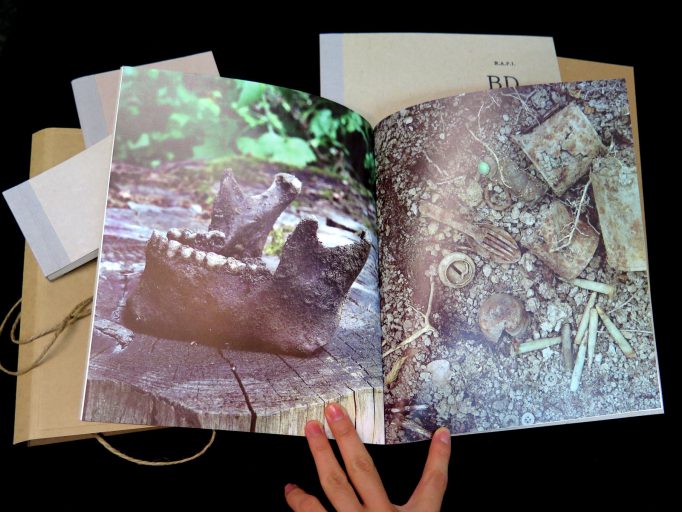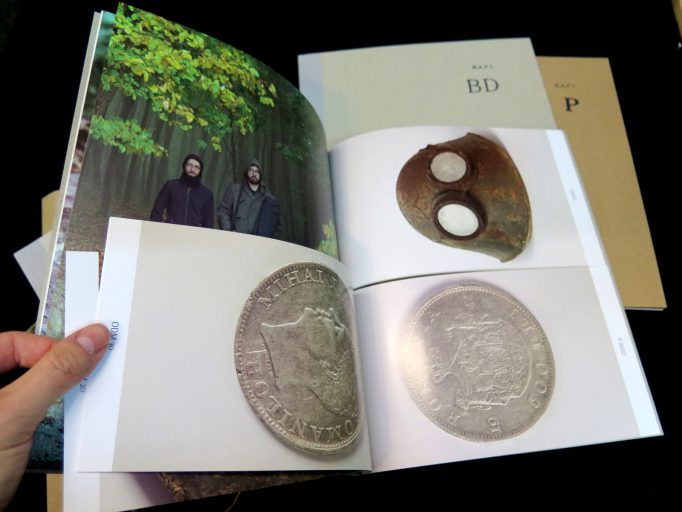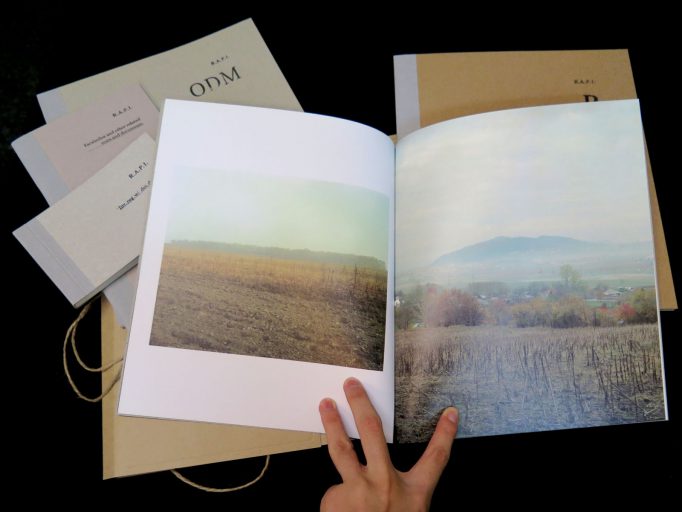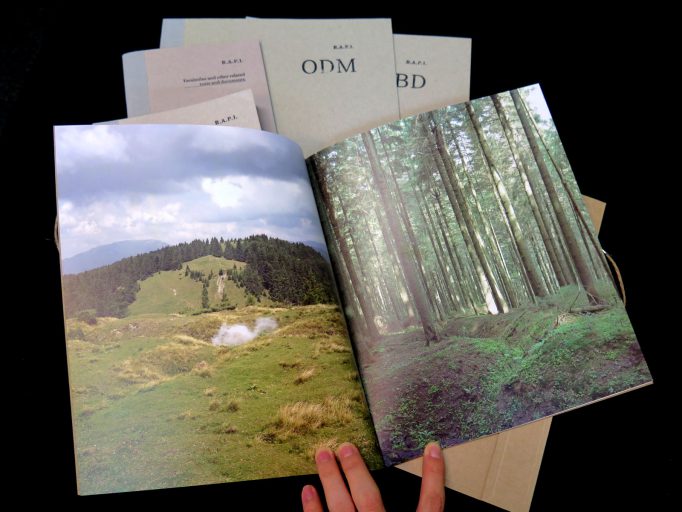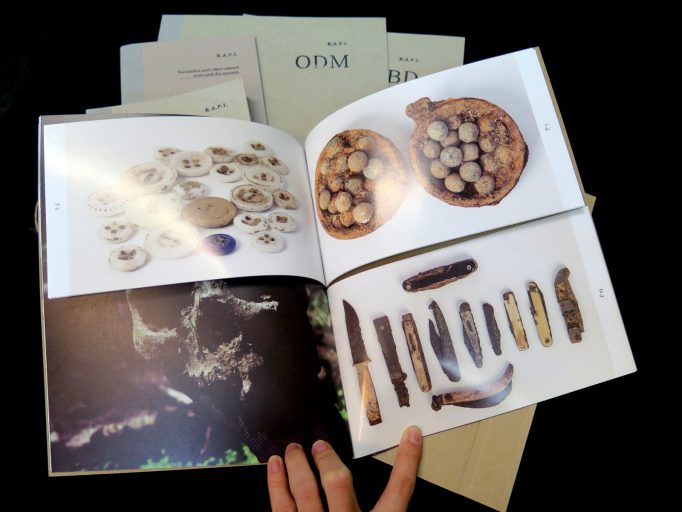Romanian Archeological Photography Index / R.A.P.I.. Bogdan Gîrbovan, Michele Bressan. Galeria Posibilă.
Posted in history, Motto Berlin store, photography on January 18th, 2018Tags: Bogdan Gîrbovan, Galeria Posibila, Michele Bressan
The Romanian Archeological Photography Index was begun three years ago through the exploration, excavation, photographing and recording of objects found in Romania dating from the time of the two world wars. It saw Bogdan Gîrbovan and Michele Bressan set out in the footsteps of the “magnets” – the locals who search for objects dating from the two world wars in order to sell them as scrap.
The project takes place on three levels. First, there is the presentation of the landscape, which is taken to be their working perimeter. Then, the objects are located, dug up and photographed in situ. These are then removed from the environment in which they were found, i.e. they are decontextualized, and photographed in a controlled environment. Through this latter, objective representation of form, they acquire a clear abstract quality that is suggestive of other forms of interpretation. Together, the three layers comprise a series of archaeological episodes in which photography is used as a means of documentation and a tool of study.
A hybrid object, at the crossroads between history book, photography book and family photo album, this is R.A.P.I. in published form. The final product will contain a wide variety of information and texts intended to create a mapping between the published object, the reader, the authors and the wider context of memory. The design and layout is the work of Matei Câlția.
5 booklets, various formats.

